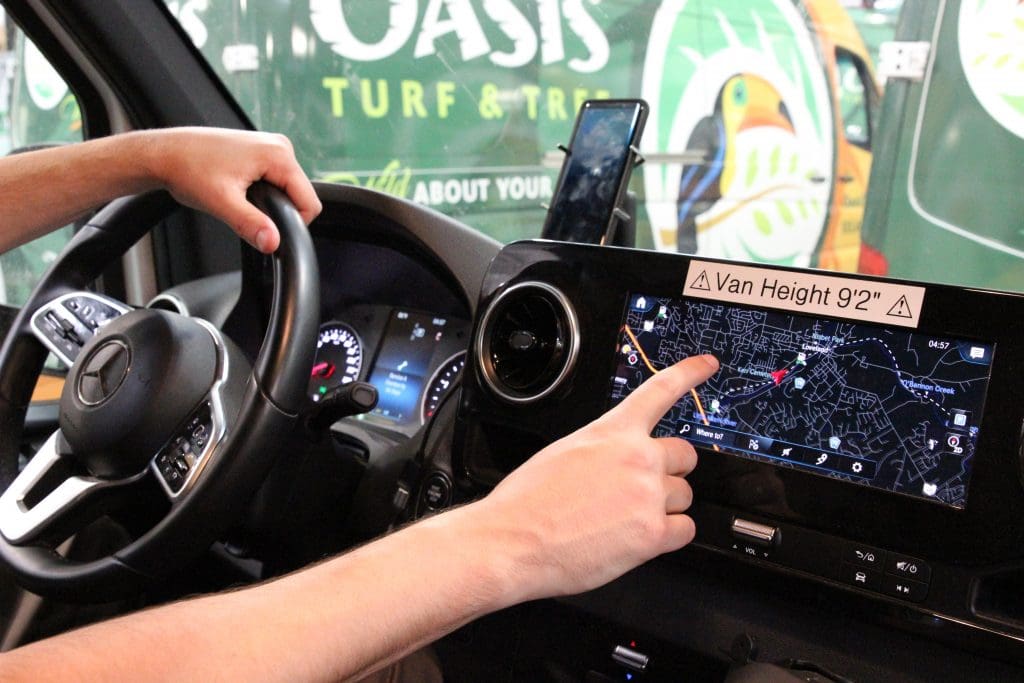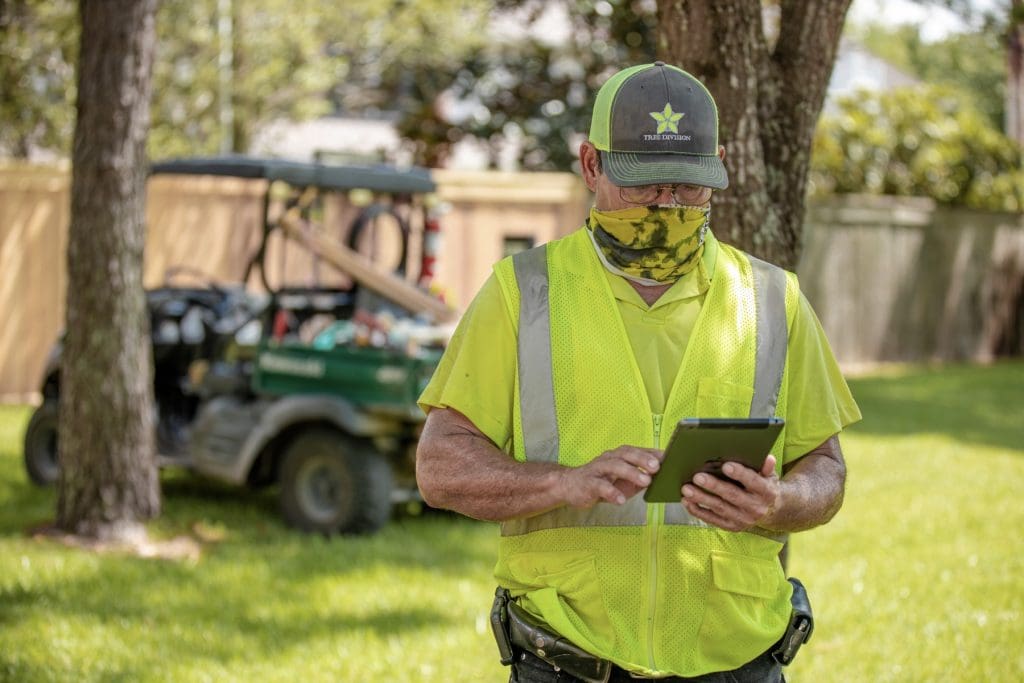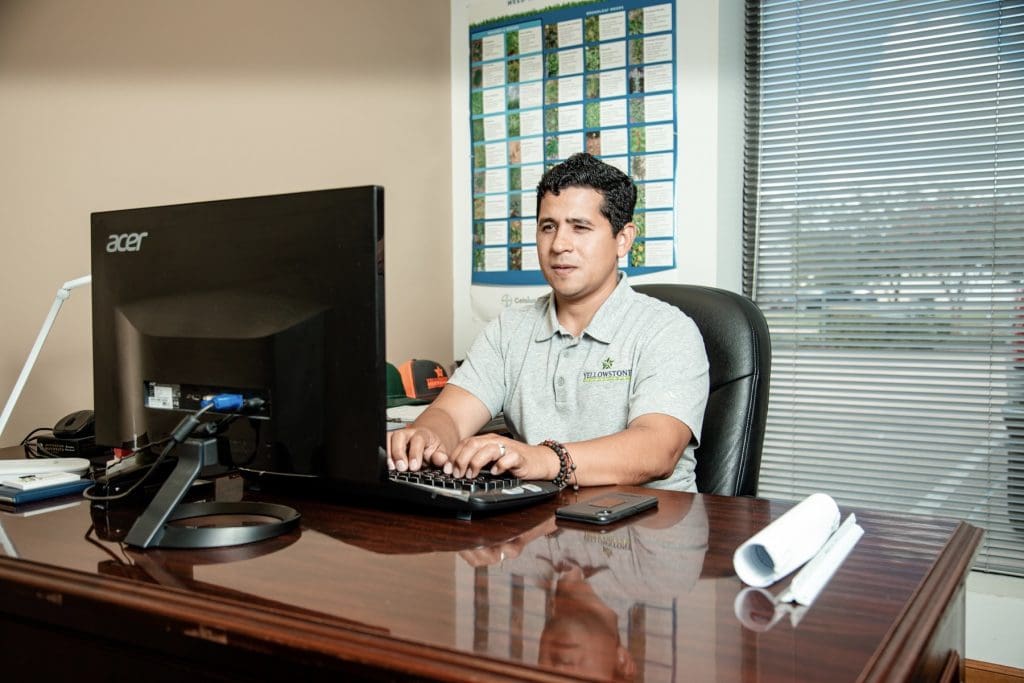
Technology continues to change how we live — and how we do business. For the lawn and landscaping industry, keeping up with technology has been a way to better serve clients while also streamlining operations and enhancing efficiency. Along with that, the companies keeping up with the latest technology are also finding ways to make work life easier on their team members. Various tools simplify their daily tasks while also improving communication and engagement. This is important considering many younger generations who are looking for work specifically seek out companies that are tech-savvy. Adopting new technology can be a way to differentiate yourself from companies that are remaining stagnant.
With a number of green industry companies already utilizing technology in exciting ways, we want to showcase how they’ve adopted various tools to enhance their business.
The Robots Are Here
Robotics is one way that the green industry is being revolutionized. Blanchford Landscape Group in Bozeman, Montana, has been piloting a few robotic mowers which will “live” at some of their residential clients’ homes. Company owner Andy Blanchford, LIC, says that certain clients are ideal candidates for a robotic mower service including those with difficult-to-access homes, those who value their privacy, and those who are highly eco-conscious. Instead of sending a truck and trailer out weekly, the robotic mower will come out and cut grass daily — which is also better for the grass.
Blanchford says that there’s also a “cool factor” that appeals to a lot of clients.
“We have a lot of clients who hire us because they know we’re keeping up with ‘what’s new,’ and they value that,” Blanchford explains. “Many of them are tech-savvy themselves and would be some of the first to test out a new gadget on the market. They like the idea of having a robotic mower handle their mowing services.”
Blanchford says that they’re offering clients the opportunity to buy or lease a robotic mower from them. Those who want total access to the mower would choose to buy it. But Blanchford says the majority of clients will likely lease a mower, making it totally hassle-free.
“If clients lease from us, then we’ll handle all the servicing of the mower, including cleaning and blade care,” Blanchford explains. “Most of our clients are interested in being hands-off and letting us handle all of the details.”
Of course, robotic mowers can also work in the commercial landscaping market. Joseph Barnes, marketing director for Yellowstone Landscape, a national company headquartered in Bunnell, Florida, says that they’re in the process of testing various models. They’re currently working with several different manufacturers and are at different stages of testing each to determine how they can best serve their clients.
“We’re looking at a near future where we can go from a four-man to a three-man crew with an autonomous mower handling the large open spaces at some of our commercial properties,” Barnes explains. “That frees up the crew to focus their efforts on other details of the property.”
Barnes adds that it’s important to put things into perspective for clients. When robotics is brought up, it may conjure images of a “Jetsons type robotics crew handling all aspects of the landscaping,” he says.
But we’re years, if not decades, away from anything like that.
Instead, Barnes says that with robotic mowers handling large open spaces that were previously tying up a lot of time, the team can focus on detail work — producing even better results for the clients at a more efficient pace.
Using Technology to Streamline Operations

There are also various ways that many lawn and landscaping companies are using technology to streamline business operations. This includes software, mobile apps, and even top-of-the-line office equipment.
Kelly Ogden, vice president of sales and customer service for Michael Hatcher & Associates, Inc., in Olive Branch, Mississippi, says that they’ve been using SiteRecon to automate property measurements. It’s significantly streamlined that process for them.
“You input the address, select the features to measure, and send it to SiteRecon and they send back a detailed report, including how much mulch to put down,” Ogden explains. “It’s eliminated several hours on properties for us. We’ll still go out to put eyes on things like slope and drainage issues but getting those measurements and recommendations have been a huge time saver.”
Ogden says that on their irrigation side, they’re also having a lot of success with Tapigo, a mobile/cloud solution that uses built-in GPS to allow technicians to identify and locate all irrigation assets on a property. They create a report and drop pins for all irrigation components — then that data lives within the system to increase efficiency later on.
“If we have a tech go out that’s new to that property, all they have to do is pull up the information instead of wasting time having to find everything,” Ogden explains. “It keeps us moving.”
In Loveland, Ohio, Oasis Turf & Tree is also using technology to streamline operations for everyone from the field staff to those in the office.
In the field, owner Rob Reindl, LIC, says the company has been in the process of converting the fleet from gasoline to electric — including their Z-Sprayer equipment. It’s all part of the company’s effort to convert their operations to net-zero emissions while also operating as efficiently as possible.
The company has also been recognized for its fleet of fully customized Mercedes-Benz Sprinter vans which have every possible bell and whistle, including product tanks designed in-house to slide in and out for easy repairs and cleaning. The vans also have a spring-assisted manual ramp so that technicians can load equipment. They use the side door to load fertilizer bags onto the top of their tank frames with a forklift — instead of having to haul them on their own.

“We’re interested in any way that technology can make our crews’ lives easier and make their workday more efficient,” Reindl says.
On the office side, this includes a predictive dialer system that saves the sales team time in hand dialing and maximizes the number of people they can reach in a day. In the office, they’ve also invested in state-of-the-art, 34-inch flat-screen computers and wireless headsets with a 300-foot range for all office staff.
Oasis also has digital media boards in their brand-new state-of-the-art facility, which are used for various real-time communication. This will include where technicians are out in the field and also positive comments from customers as they come in. The new building was also designed to be energy efficient. It uses geothermal energy as well as solar panels on the roof.
At Neave Group Outdoor Solutions, headquartered in Wappingers Falls, New York, CEO Scott Neave, ASLA, PLA, says that technology allows for “communication, accountability, and a firm grasp of what’s going on in the business.”
He uses everything from Go iLawn for property measurements to Basecamp for project management to HubSpot for marketing — and Aspire as an internal software system to manage the business. Neave says the company had also adopted Microsoft Teams prior to the pandemic, which made it easy to adapt as many things changed.
“Our office staff was already set up remotely, so the pandemic wasn’t a learning curve for us in that sense,” he says. “I think for our industry, which is on-the-go, using technology to be able to stay in touch and check in makes a lot of sense.”
Yellowstone’s Barnes says that Aspire software is helping give the company a real-time look at business operations and performance.
“The ability to know on a daily basis exactly where you’re at with labor hours is critical when it comes to the bottom line,” he says. “We also use Aspire’s GPS integration in our fleet vehicles for easy routing. But it’s also been great to give our customers more precise information — such as how long they’ve been on-site or when they’re going to be out. It’s been exciting to have that kind of visibility with 4,000 employees.”
For customers, Barnes says this is becoming the expectation.
“If Domino’s can tell you exactly how far along your pizza is in their order process — or when it’s on route to your house, then we want to be able to do that too,” Barnes says. “Technology is only going to continue to enhance expectations and we are committed to keeping up.”
Connecting with Clients

Technology can also help provide customers with the best possible experience. For Oasis Turf & Tree, this has included the use of Captivated, a system that allows the team to communicate via text with clients directly from the computer.
“We text our customers to let them know when we’re coming out for service, but it also gives them the opportunity to text us if they have pictures of things that they’re seeing in the yard,” explains Adam Zellner, vice president of sales for Oasis. “This improves the overall customer experience as they’re able to get a quick response to their questions.”
Reindl says it’s all about making the “customer experience as smooth and easy as possible.” He says that technology can be an excellent way to help clients feel that they have easy and frequent access to the company.
Neave is also using technology to better connect with clients and even enhance the overall sales process from selling a prospective job all the way through completing it. A huge piece of that has been the use of 3D design renderings to show clients what their finished project will look like. Neave says this has been instrumental in sales and they use it for large outdoor living spaces and pool projects.
“Most people just can’t visualize the finished space in 2D,” he says. “In our region, almost all properties are hilly and seeing elevation changes in 2D is really difficult to visualize if you aren’t used to reading drawings. In that way, 3D has been a game-changer for us.”

Neave says that the company also offers virtual reality (VR) technology to actually walk clients through a design. VR can use computer-generated simulation to bring a 3D rendering to life and allow the client to “walk around” their space while wearing a headset. While the company has access to this technology and has used it in the past, the fact that it frequently makes clients somewhat nauseated by moving around in the interactive environment has kept them from using it more frequently.
“I’m among those who get a ‘sea-sick type of feeling’ from using VR, so we don’t utilize it too often,” Neave says. “The 3D renderings are usually enough to give that wow factor and a better understanding of what the finished project will look like.”
Technology and Our Future
There’s no question that as we move forward, technology will only continue to evolve — and there will be even more opportunities to jump on board. These tools are becoming increasingly innovative, making them easier to incorporate with less of a learning curve. While change always has the potential to be intimidating, it’s also important that as an industry, we continue to evolve and remain relevant. As we move full speed into the future, it’s safe to say that introducing new technology will become increasingly expected by customers and team members alike.
This article was published in the July/August issue of the magazine. To read more stories from The Landscape Professional magazine, click here to subscribe to the digital edition.

